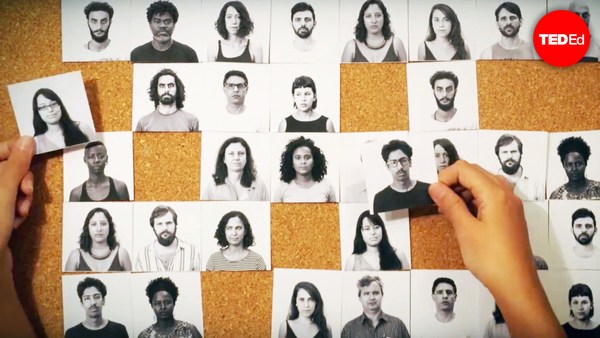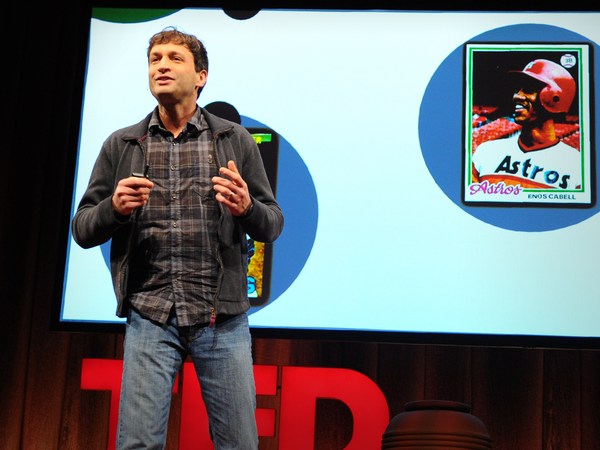Hi. Let me ask the audience a question: Did you ever lie as a child? If you did, could you please raise your hand? Wow! This is the most honest group of people I've ever met.
(Laughter)
So for the last 20 years, I've been studying how children learn to tell lies. And today, I'm going to share with you some of the discoveries we have made.
But to begin, I'm going to tell you a story from Mr. Richard Messina, who is my friend and an elementary school principal. He got a phone call one day. The caller says, "Mr. Messina, my son Johnny will not come to school today because he's sick."
Mr. Messina asks, "Who am I speaking to, please?"
And the caller says, "I am my father."
(Laughter)
So this story --
(Laughter)
sums up very nicely three common beliefs we have about children and lying. One, children only come to tell lies after entering elementary school. Two, children are poor liars. We adults can easily detect their lies. And three, if children lie at a very young age, there must be some character flaws with them, and they are going to become pathological liars for life. Well, it turns out all of the three beliefs are wrong.
We have been playing guessing games with children all over the world. Here is an example. So in this game, we asked children to guess the numbers on the cards. And we tell them if they win the game, they are going to get a big prize. But in the middle of the game, we make an excuse and leave the room. And before we leave the room, we tell them not to peek at the cards. Of course, we have hidden cameras in the room to watch their every move. Because the desire to win the game is so strong, more than 90 percent of children will peek as soon as we leave the room.
(Laughter)
The crucial question is: When we return and ask the children whether or not they have peeked, will the children who peeked confess or lie about their transgression?
We found that regardless of gender, country, religion, at two years of age, 30 percent lie, 70 percent tell the truth about their transgression. At three years of age, 50 percent lie and 50 percent tell the truth. At four years of age, more than 80 percent lie. And after four years of age, most children lie. So as you can see, lying is really a typical part of development. And some children begin to tell lies as young as two years of age.
So now, let's take a closer look at the younger children. Why do some but not all young children lie? In cooking, you need good ingredients to cook good food. And good lying requires two key ingredients. The first key ingredient is theory of mind, or the mind-reading ability. Mind reading is the ability to know that different people have different knowledge about the situation and the ability to differentiate between what I know and what you know. Mind reading is important for lying because the basis of lying is that I know you don't know what I know. Therefore, I can lie to you.
The second key ingredient for good lying is self-control. It is the ability to control your speech, your facial expression and your body language, so that you can tell a convincing lie. And we found that those young children who have more advanced mind-reading and self-control abilities tell lies earlier and are more sophisticated liars. As it turns out, these two abilities are also essential for all of us to function well in our society. In fact, deficits in mind-reading and self-control abilities are associated with serious developmental problems, such as ADHD and autism. So if you discover your two-year-old is telling his or her first lie, instead of being alarmed, you should celebrate --
(Laughter)
because it signals that your child has arrived at a new milestone of typical development.
Now, are children poor liars? Do you think you can easily detect their lies? Would you like to give it a try? Yes? OK. So I'm going to show you two videos. In the videos, the children are going to respond to a researcher's question, "Did you peek?" So try to tell me which child is lying and which child is telling the truth. Here's child number one. Are you ready?
(Video) Adult: Did you peek? Child: No.
Kang Lee: And this is child number two.
(Video) Adult: Did you peek? Child: No.
KL: OK, if you think child number one is lying, please raise your hand. And if you think child number two is lying, please raise your hand. OK, so as a matter of fact, child number one is telling the truth, child number two is lying. Looks like many of you are terrible detectors of children's lies.
(Laughter)
Now, we have played similar kinds of games with many, many adults from all walks of life. And we show them many videos. In half of the videos, the children lied. In the other half of the videos, the children told the truth. And let's find out how these adults performed. Because there are as many liars as truth tellers, if you guess randomly, there's a 50 percent chance you're going to get it right. So if your accuracy is around 50 percent, it means you are a terrible detector of children's lies.
So let's start with undergrads and law school students, who typically have limited experience with children. No, they cannot detect children's lies. Their performance is around chance.
Now how about social workers and child-protection lawyers, who work with children on a daily basis? Can they detect children's lies? No, they cannot.
(Laughter)
What about judges, customs officers and police officers, who deal with liars on a daily basis? Can they detect children's lies? No, they cannot.
What about parents? Can parents detect other children's lies? No, they cannot.
What about, can parents detect their own children's lies? No, they cannot.
(Laughter) (Applause)
So now you may ask why children's lies are so difficult to detect. Let me illustrate this with my own son, Nathan. This is his facial expression when he lies.
(Laughter)
So when children lie, their facial expression is typically neutral. However, behind this neutral expression, the child is actually experiencing a lot of emotions, such as fear, guilt, shame and maybe a little bit of liar's delight.
(Laughter)
Unfortunately, such emotions are either fleeting or hidden. Therefore, it's mostly invisible to us.
So in the last five years, we have been trying to figure out a way to reveal these hidden emotions. Then we made a discovery.
We know that underneath our facial skin, there's a rich network of blood vessels. When we experience different emotions, our facial blood flow changes subtly. And these changes are regulated by the autonomic system that is beyond our conscious control. By looking at facial blood flow changes, we can reveal people's hidden emotions. Unfortunately, such emotion-related facial blood flow changes are too subtle to detect by our naked eye. So to help us reveal people's facial emotions, we have developed a new imaging technology we call "transdermal optical imaging."
To do so, we use a regular video camera to record people when they experience various hidden emotions. And then, using our image processing technology, we can extract transdermal images of facial blood flow changes. By looking at transdermal video images, now we can easily see facial blood flow changes associated with the various hidden emotions. And using this technology, we can now reveal the hidden emotions associated with lying, and therefore detect people's lies. We can do so noninvasively, remotely, inexpensively, with an accuracy at about 85 percent, which is far better than chance level.
And in addition, we discovered a Pinocchio effect. No, not this Pinocchio effect.
(Laughter)
This is the real Pinocchio effect. When people lie, the facial blood flow on the cheeks decreases, and the facial blood flow on the nose increases.
Of course, lying is not the only situation that will evoke our hidden emotions. So then we asked ourselves, in addition to detecting lies, how can our technology be used? One application is in education. For example, using this technology, we can help this mathematics teacher to identify the student in his classroom who may experience high anxiety about the topic he's teaching so that he can help him. And also we can use this in health care. For example, every day I Skype my parents, who live thousands of miles away. And using this technology, I can not only find out what's going on in their lives but also simultaneously monitor their heart rate, their stress level, their mood and whether or not they are experiencing pain. And perhaps in the future, their risks for heart attack or hypertension. And you may ask: Can we use this also to reveal politicians' emotions?
(Laughter)
For example, during a debate. Well, the answer is yes. Using TV footage, we could detect the politicians' heart rate, mood and stress, and perhaps in the future, whether or not they are lying to us. We can also use this in marketing research, for example, to find out whether or not people like certain consumer products. We can even use it in dating. So for example, if your date is smiling at you, this technology can help you to determine whether she actually likes you or she is just trying to be nice to you. And in this case, she is just trying to be nice to you.
(Laughter)
So transdermal optical imaging technology is at a very early stage of development. Many new applications will come about that we don't know today. However, one thing I know for sure is that lying will never be the same again.
Thank you very much.
Xiè xie.
(Applause)





